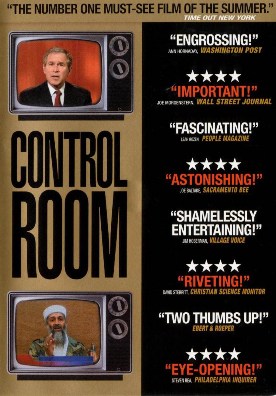Look Both Ways
Sarah Watt’s Look Both Ways bears more than a passing resemblance to Nicole Holofcener’s Friends With Money, which I reviewed last week. Both are ambitious ensemble pieces with multiple but interlocking story lines, both have first-rate casts playing likeable and interesting characters and both have a strong authorial point of view that at times threatens to lapse into preachiness. Above all, both are suffused not only with subtle wit but with a feminine sensibility that may be redefining the chick flick. Doubtless the soppy romantic comedy that ends with a wedding will never go away completely, and both these films delight in pairing up lonely single women with rather needy men. But both also have ambitions that go far beyond the usual happy ending.
Miss Watt has a painter’s eye, and of the two films hers is the more beautiful to look at. Set in Adelaide, South Australia, its live action is intercut with animated sequences, drawn by the director herself, which mostly illustrate the fearful fantasy life of her heroine, Meryl (Justine Clarke) — who is also an illustrator. The overt autobiographical element is one difference from Friends With Money, as is the dominance of a single point of view. Though there are other story-lines that do not involve her directly, we never stray far from the imagination of Meryl, who has just returned home from her father’s funeral when she witnesses an accident in which a man is killed by a train. She tries to make light of it. “Everyone has to witness something ghastly one day,” she says chirpily. “My fifteen minutes of blecchh.” But the horror fits only too well with her constant daydreams of disasters, deaths and dismemberments that only we are aware of.
On the scene of the accident soon afterwards are Nick (William McInnes) and Andy (Anthony Hayes), photographer and reporter respectively for the Southern Mail. Nick gets a photographer’s dream shot, which ends up on the front page, of the moment the victim’s wife is made aware of the tragedy. Andy, a political sort with a chip on his shoulder, wonders in print if the dead man had been driven to suicide by the injustice in the world.
Such insensitivity to the bereaved woman is offered up for our consideration, but immediately qualified. For Nick has just learned that he has cancer of a life-threatening kind, and Andy, a divorced father of two, has just been informed by his semi-detached girlfriend, Anna (Lisa Flanagan), that she is pregnant. Andy’s own suicidal tendencies are presently revealed. Thus, those who might otherwise have been merely the jackals of the press, preying upon the misery of another, are instead brought by their own misery into her orbit, so to speak. Perhaps we need to have some sympathy not only with those who experience death and bereavement directly, but also with those whose imaginative closeness to the deaths of others or of themselves falls not far short of experiencing it.
It is a sleepy summer Friday afternoon, and Nick has been told that he will have to wait until Monday to see a specialist and find out how serious his cancer is. But it doesn’t look good, as it has metastasized. He starts having powerful and vivid memories the death of his father (Edwin Hodgeman) from cancer a year before. Also, after going on the internet to find out more about his own cancer, he begins to fantasize visually about the malign processes now going on inside his body. These sequences are credited to something called the Visible Human Project at the University of Maryland, and their abstract and visual richness create an obvious link with Meryl’s lurid fantasies of accidental death. Naturally, the two characters are drawn to each other by their common anticipation of mortality, though Nick doesn’t tell Meryl of his diagnosis right away.
Instead, they begin a love-affair. The time-frame of the film is limited to the weekend between Nick’s diagnosis and the fateful visit to the specialist — whose outcome, like that of the love affair, is only suggested by a closing photo-montage. The funniest moment in the picture comes as Nick tries to break the news to Meryl on Sunday afternoon by telling her that he “can’t start anything” right now, and she assumes he’s breaking up with her.
“I met you on Friday, slept with you on Saturday. You took me to meet your mother on Sunday and now you can’t start anything? This is the tightest little relationship I’ve ever had.”
The tightness of the frame helps us to keep in focus not only their relationship but what is going on with Anna and Andy, as well as with their editor at the Mail, Phil (Andrew S. Gilbert), who is badly shaken by Nick’s news, and also with the train driver (Andreas Sobik) who is similarly traumatized by the accident. The latter two characters are mainly limited to wordless sequences in which their emotional turmoil is made manifest in their faces and somnambulistic actions. They thus serve as a sort of visual chorus, commenting on the imagination of death as we see it in the lives of the speaking characters. That’s why it is so moving when, near the end of the film, the train driver turns up at the door of the train victim’s widow — who is also mainly a portrait in mute grief — to say he’s sorry, carrying one of the sympathy cards designed by Meryl.
At one level, this movie is a sort of hymn to feminine timidity with which male viewers, particularly, may occasionally grow impatient. But it is also engaging, gorgeous to look at and undeniably powerful emotionally. I recommend it.
Discover more from James Bowman
Subscribe to get the latest posts to your email.






